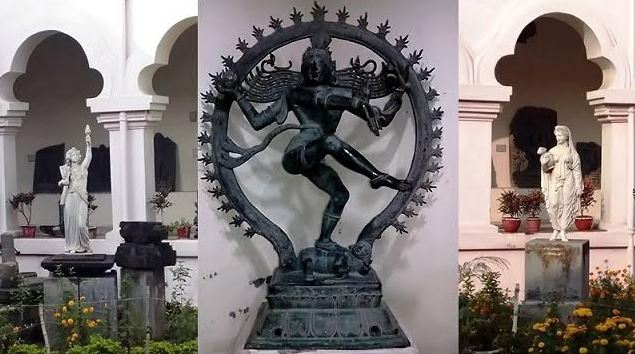
RAJSHAHI, May 19, 2024 (BSS) - Varendra Research Museum (VRM) has become one
of the main icons in terms of showcasing rare archeological artifacts in
south Asia.
For the last scores of years, the VRM has been carrying deliberation of
ancient heritages and ultimately it has become enriched with archeological
resources.
Located in Hossainiganj area in the Rajshahi metropolis and run by Rajshahi
University, the museum is enriched with the monuments that still defied the
ravages of man and nature.
Around 19,100 artifacts of hundreds and thousands of years, including the
periods of Pal, Sen, Mourjo and Gupta, remained preserved in the museum.
The first museum established in erstwhile East Bengal in 1910, VRM is very
much a popular and tourist attraction contributing a lot to showcasing the
century-old historical and archeological artifacts.
Talking to BSS here Thursday, Professor Dr Emtiaz Ahmed, Director-In-Charge
of VRM, said the centuries-old artifacts showcased at the museum present the
glorious past of Bengal in general and of Varendra in particular.
The museum library has a collection of books and periodicals, right from the
beginning, essential for research and higher studies in ancient and medieval
history and art and archaeology of Bengal.
Collection of the museum consists of stone and metal sculptures, epigraphs,
coins, pottery and plaques in terracotta, weapons, Arabic and Persian
documents, paintings, books and periodicals, Sanskrit and Bengali
manuscripts.
Referring to the historical and archeological records, Prof Emtiaz Ahmed said
the museum originated from Varendra Research Society, which was established
by Saratkumar Ray and two of his close associates Akshay Kumar Maitreya and
Ramaprasad Chanda.
A large number of visitors from both home and abroad visit the museum
everyday from home and abroad, he added.
Sarat kumar led an exploratory tour accompanied by AK Maitreya, Rakhaldas
Bandyopadhyay and a few others to Deopara, Palpara, Malancha, Jugpur, Itahar,
Chabbishnagar, Mandoil, Kumarpur, Khetur and Vijaynagar in early April 1910.
The party was able to collect 32 pieces of sculptures, including the life-
size images of Chandi from Mandoil.
Akshay Kumar constructed the museum building at his own cost on the land
donated by his elder brother Raja Pramada Nath Ray of Dighapatiya.
Lord Carmichael laid its foundation stone on 13 November 1916. The museum was
opened on 27 November 1919.
Gallery-1 showcases relics of the Indus Valley-Civilization (2500 BC), found
from the excavations at Paharpur in Bangladesh (8th-12th century AD), Persian
farmans and Bangla documents, Sanskrit inscriptions in old Bangla scripts,
glazed tiles, metal ware in Islamic style, hand written copies of the Holy
Quran, Bangla and Sanskrit manuscripts, Mughal paintings and miscellaneous
sculptures in stone and bronze, antiquities from Nalanda, Bihar and other
parts of India.
In gallery-2, there are Buddhist and Hindu stone sculptures and modern wood
sculptures.
Gallery-3 displays Hindu sculptures: images of Surya, Shiva, Ganesha and
Visnu. Cult icons of the Shaktas of Durga-Gauri-Uma-Parvati, the Matrikas and
Chamunda are displayed in gallery-4.
Gallery-5 offers images of Buddha, Bodhisattvas, Taras, Jaina Tirthankaras
and minor gods and goddesses of Hinduism.
Arabic, Persian, Sanskrit and old Bangla stone inscriptions, sculptured
stones of the Muslim period, mihrab, decorated door jambs and lintels and a
pair of Sher Shah's Bronze cannons are displayed in gallery-6.
The upper row of the verandah is furnished with terracotta molded plaques
from Paharpur.
In the bottom row, there are Buddhist and Hindu sculptures. The courtyard
offers a fascinating view of sculptured stones from Hindu and Muslim
buildings, stone pillars, Shiva Lingams and Yonipattas.
The number of Sanskrit manuscripts traced so far is 2,530. The museum can, at
present with 10,147 volumes, reasonably feel proud of its library.
Meanwhile, Rajshahi University authorities have renovated and modernized the
museum at a cost of Taka 70 lakh donated by American Cultural Center.
Prof Ahmed said the museum has now been furnished with more modern
facilities, equipment and designs with construction of a new three-storied
building.